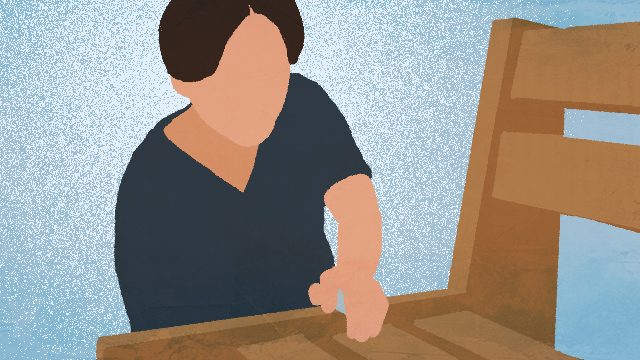SUMMARY
This is AI generated summarization, which may have errors. For context, always refer to the full article.

CEBU CITY, Philippines – According to the United Nations, people with disabilities (PWDs) are 4 times more likely to die when a disaster strikes than those without disabilities. From January to September 2013, the Philippines alone had 31 natural disasters. Action plans to improve emergency preparedness have been put in place for the general public yet the Deaf Community continues to be marginalized and overlooked due to communication barriers, lack of qualified Filipino Sign Language interpreters (FSL), and weak literacy skills.
According to the World Federation of the Deaf, only 20% of Deaf people around the world have access to education, leaving 80% with none. This rings very true in the Philippines where some of the provinces do not have schools that meet Deaf children’s basic education needs, contributing a double barrier for those who cannot hear and speak: they lack access to emergency information and the ability to communicate their support needs to emergency management actors. (READ: Can the Philippines become a deaf inclusive country?)
A recent story shared by a young Deaf-Blind guy on his experiences with the October 2013 earthquake that struck Bohol and Cebu exemplifies the marginalization Deaf people face during and after disasters. A video shows him communicating in tactile signs explaining that his inability to see and hear had him waiting a long time for someone to assistant him because there were no emergency responders who has the skills or knowledge on how to communicate and assist the needs of a Deaf-Blind person. (READ: How Pope Francis spoke to the Deaf)
The Philippines currently does not have any DRR guidelines that meet the needs of Deaf people, placing them in higher vulnerability risks to disasters. Recent events of recurring typhoons, floods, and earthquakes have demonstrated a need to address resiliency within the Deaf Community. This however, does not come without challenges. For starters, there are no accessible emergency preparedness materials to meet the language needs of Deaf people. Deaf organizations face a severe shortage of qualified FSL interpreters to meet the growing demands of Deaf Communities’ needs. We have emergency service providers that are unaware and unprepared on how to work with and assist a Deaf person in need. Stigmatization still exists towards Deaf people, with some labeling them “Amang”, an unacceptable degrading word and the preferred term to define them is “Deaf/deaf’.
Deaf Disaster Assistance Team – Disaster Risk Reduction (DDAT-DRR) was established for Deaf people to become agents of change within their own communities. They serve bridging those gaps for Deaf Community members by becoming their communication platform as Deaf Relay Interpreters and being their voice to the wider Filipino communities through FSL. It is hoped that DDAT-DRR will generate interest amongst key DRR Managements and Media by advocating for Deaf Communities’ needs during disasters through Deaf Awareness trainings and developing a Deaf inclusive emergency guideline.
DDAT-DRR is the first of its kind in the Philippines where they recently received a letter of invitation to present their work at the World Federation of the Deaf Conference (WFD) in Istanbul, Turkey from July 28-August 1, 2015. This short notice calls for potential sponsors to help support two DDAT-DRR persons’ airfare and conference registration. It is hoped that the representation of the work they do for the Philippines will serve as a regional, national, and international model for others to follow in Southeast Asia and the Pacific. – Rappler.com
Editor’s note: The Deaf Disaster Assistance Team-DRR (DDAT-DRR) is an independent Deaf-led organization established for and by Deaf people. The original version of this article featured a photo and a video of the Deaf-Blind man, but they were removed in respect to the man’s privacy upon the request of the DDAT-DRR.
Add a comment
How does this make you feel?
There are no comments yet. Add your comment to start the conversation.